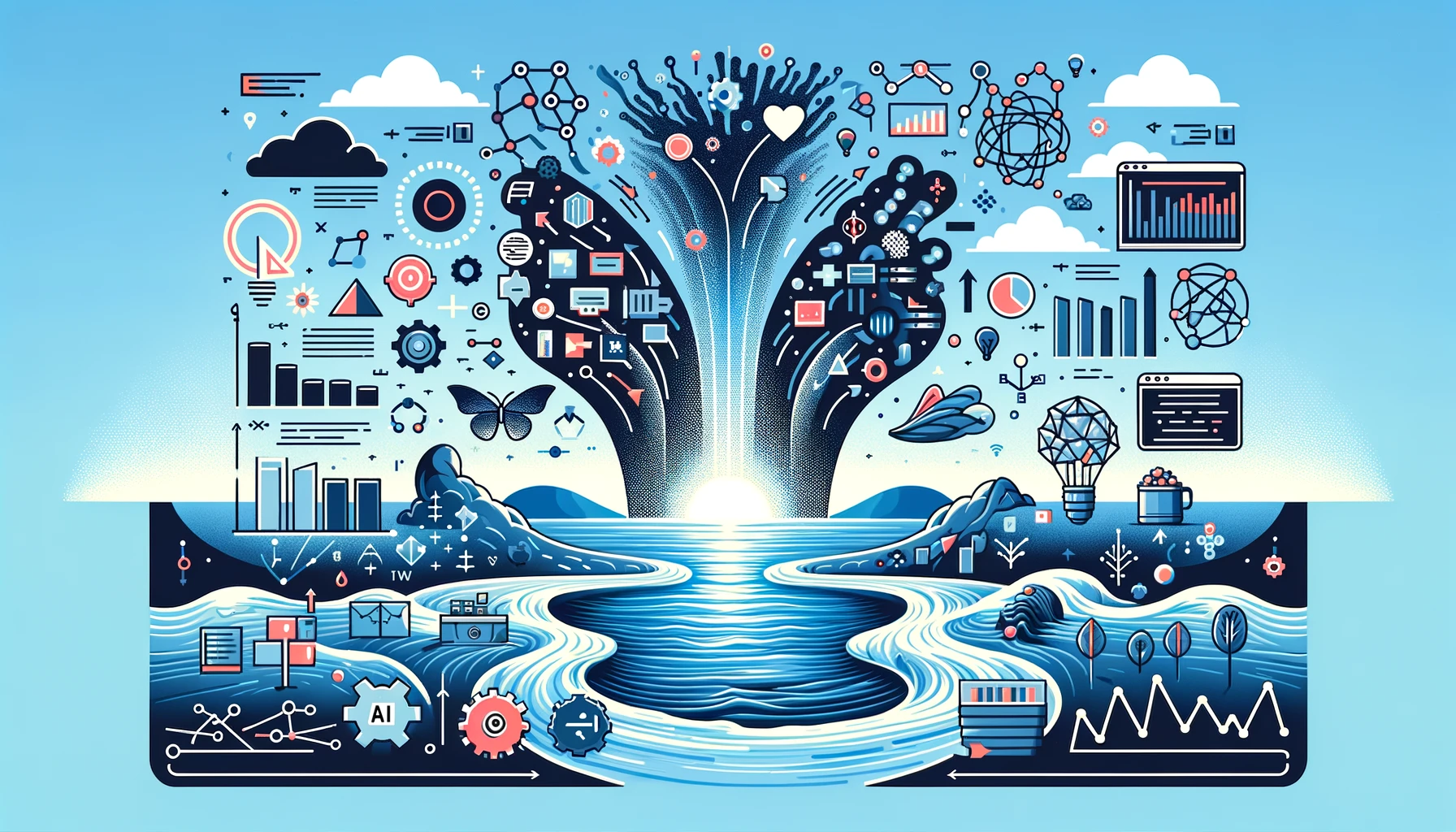Drowning in Data
Author: Stu FeeserDrowning in Data: The First Step in Turning Your Data Lake into an Ocean of Opportunities
In the digital age, businesses and organizations find themselves awash in data. From billions of infrastructure photographs to exhaustive customer interaction logs, the sheer volume of unstructured data presents both a challenge and an opportunity. The transformation of this data deluge into actionable insights is the heart of our journey, particularly when using AI to unearth the hidden gems within.
Let’s delve into two scenarios: an engineering firm seeking to employ computer vision to identify stress fractures in bridges from countless photographs, and a bank aiming to dissect customer banking habits for tailored service offerings. Both situations are mired in unstructured data, yet the path to converting this data into insightful, actionable information is fraught with complexity and cost. Recognizing the tools at our disposal is the first step toward setting realistic goals and achieving meaningful outcomes.
The Evolution of AI in Data Analysis
The transformation journey of unstructured data into AI-analyzable content kicks off with data curation, involving cleaning, labeling, and organizing. Here’s where the cutting-edge AI technologies come into play:
-
Data Cleaning and Preparation: At this stage, the raw, unstructured data is rife with inconsistencies and irrelevancies. For instance, sorting through irrelevant images to find usable bridge photographs requires sophisticated algorithms. Traditionally, Convolutional Neural Networks (CNNs) have been the go-to for pattern recognition in images. However, the landscape is shifting toward Transformers in computer vision. These models, such as Vision Transformers (ViT), offer a fresh approach, treating images more like sequences of data, similar to text, allowing for potentially richer analysis.
-
Data Labeling: This crucial step involves tagging data with labels for AI learning. Here, CNNs have paved the way, especially in marking out stress fractures in images. Yet, as we pivot to more modern methodologies, Foundation Models emerge as versatile giants capable of adapting to various tasks, including image processing, with minimal fine-tuning. These models are at the forefront, challenging the notion that LLMs are the sole purveyors of AI’s future.
-
Data Organization: Post-cleaning and labeling, the data must be systematically organized. This infrastructure sets the stage for AI analysis, where Few-shot Learning and Zero-shot Learning techniques shine. These advancements allow AI models to perform tasks with scant examples, revolutionizing the efficiency of preparing data for analysis.
-
From Theory to Execution: The implementation phase is where the rubber meets the road, transitioning from theoretical models to actionable insights. Neural Architecture Search (NAS) and AutoML stand out by automating the search for optimal neural network architectures, simplifying the leap from data to decision-making.
Addressing the Shift from CNNs to Transformers
One of the notable shifts in AI’s application to data analysis is the gradual transition from CNNs to Transformer-based models for vision processing. This evolution can be a sticking point for those accustomed to traditional CNN applications. However, understanding that Transformers offer a more versatile and often more powerful approach to analyzing complex datasets can help realign expectations and open up new possibilities for data utilization.
Balancing Cost and Expectation
Embarking on the journey of transforming unstructured data into a format digestible by AI involves understanding the complexities and costs associated with each step. It’s crucial to recognize that while the promise of AI is vast, its effective deployment requires careful preparation and the right technological approach.
For businesses poised to harness their data’s potential, clarity on the process and the technologies involved is paramount. This series aims to bridge the gap between ambitious data monetization goals and the realistic application of AI technologies. By embracing the latest in AI advancements, from Transformers in vision processing to the nuanced capabilities of Foundation Models, businesses can navigate the data deluge with precision and insight, turning untapped data lakes into oceans of opportunity.
